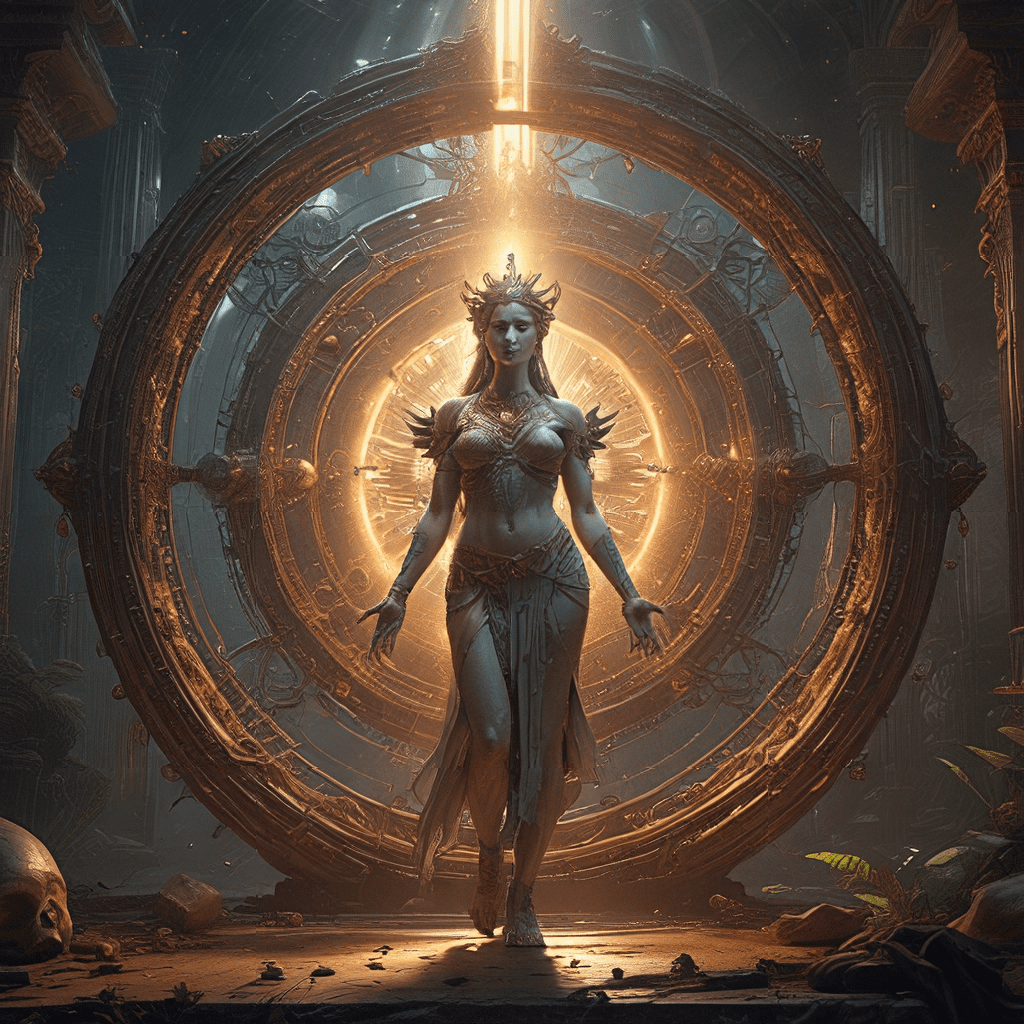1. Introduction: The Eternal Cycle of Existence
Ancient Egyptian mythology is filled with fascinating stories about life, death, and the journey to the afterlife. Central to this mythology is the belief in a continuous cycle of existence, where creation and the afterlife are intertwined. The Egyptians believed in cyclical time, where life, death, and rebirth were part of an eternal loop. This belief is reflected in their creation myth and their complex ideas about reincarnation.
2. The Creation Myth: A Journey from Chaos to Order
The Egyptian creation myth tells the story of how the world emerged from primordial chaos. The myth begins with Nun, a vast expanse of water, representing the original state of existence. From Nun, the first god, Atum, emerged, bringing order and light to the universe. Atum, also known as Ra, the sun god, self-created himself and then created other deities, including Shu, the god of air, and Tefnut, the goddess of moisture. From Shu and Tefnut, Geb, the god of earth, and Nut, the goddess of sky, were born.
This creation story highlights the central theme of order emerging from chaos. The dark, formless abyss of Nun is transformed into a structured and organized universe through the actions of the gods. The creation of the world is a process of light overcoming darkness, order replacing chaos, and life emerging from non-existence. This theme is repeated throughout Egyptian mythology and reinforces the belief in cyclical time, where the universe is constantly renewed and reborn.
3. The Journey to the Afterlife: A Path of Judgment and Transformation
The Egyptians believed that death was not an end but a transition to another realm, the afterlife. They meticulously prepared for this journey, performing elaborate rituals and preserving bodies through mummification. They believed that the deceased soul would embark on a perilous journey to the underworld, where their heart would be weighed against a feather, symbolizing truth and justice. This judgment ceremony was depicted in the Book of the Dead, a collection of spells and hymns intended to guide the deceased through the afterlife.
The heart weighing ceremony was a crucial moment in the journey to the afterlife. If the heart was lighter than the feather, the soul would be granted passage to the Field of Reeds, a paradise where the blessed lived eternally. However, if the heart was heavier, the soul would be devoured by a monstrous creature called Ammit, representing chaos and destruction. The afterlife experience was thus a test, a judgment of the deceased’s actions and their moral worthiness.
4. The Role of Osiris: King of the Underworld and Judge of the Dead
Osiris, the god of the underworld, played a central role in the Egyptian afterlife. He was associated with death, resurrection, and rebirth. His myth is closely tied to the journey of the deceased and the concept of the afterlife. Osiris, who was murdered and dismembered by his jealous brother Seth, was resurrected by his wife Isis. He then became the ruler of the underworld, where he judged the souls of the dead.
The story of Osiris highlights the importance of resurrection and rebirth in Egyptian mythology. Osiris’s death and resurrection represent the cyclical nature of life and death. The god’s resurrection offered hope for the dead, suggesting that even after death, there was a chance for renewal and continued existence. Osiris’s role as judge of the dead further emphasized the importance of morality in the afterlife. The deceased were expected to have lived a righteous life and to be judged worthy of entering the Field of Reeds.
5. Rebirth and Reincarnation: A Continuous Cycle
The Egyptians believed that the soul, after passing judgment, could be reborn into a new life on earth. This belief in reincarnation was closely tied to their concept of cyclical time and the eternal cycle of existence. The deceased soul, represented by the Ka, was believed to exist in the afterlife, connected to the living through the Ba, another aspect of the soul. The Ka was an energy double of the individual, representing their essence, while the Ba could travel freely between the worlds of the living and the dead.
The concept of reincarnation offered the Egyptians comfort and hope. It reassured them that their existence was not limited to a single lifetime but extended across multiple lives. It also emphasized the importance of living a good life, as their actions in this life could have a direct impact on their future incarnations. The cycle of rebirth was seen as a continuous journey of learning and growth, with the soul constantly striving for enlightenment and perfection.
6. The Ka and Ba: Two Aspects of the Soul
The Egyptians believed that the soul had two distinct aspects: the Ka and the Ba. The Ka, often represented as a double of the individual, was associated with the deceased’s vital essence. It resided in the tomb and was connected to the person’s physical body. The Ka was believed to receive offerings and to be sustained by the life force of the individual.
The Ba, on the other hand, was the soul’s personality and spiritual essence. It could freely travel between the worlds of the living and the dead. The Ba was depicted as a human-headed bird, symbolizing its ability to soar beyond the limitations of the physical world. The Ba was crucial for the journey to the afterlife, as it was the aspect of the soul that was judged in the Hall of Two Truths. If the Ba was declared worthy, it could rejoin the Ka in the tomb, ensuring the deceased’s eternal existence.
The concepts of the Ka and the Ba provide further insight into the Egyptians’ complex understanding of the soul and its role in the afterlife. They highlight the belief in the enduring nature of the soul and its connection to both the physical and the spiritual realm.




